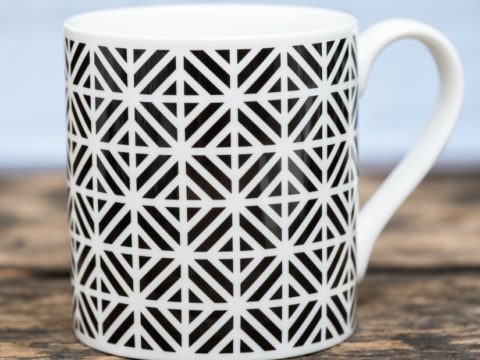Margaret Douglas: Life Story
Chapter 6 : At Anne Boleyn's Court
In 1533, when Princess Mary was demoted in rank, and had her household disbanded, Margaret was summoned to court to serve the new Queen, Anne Boleyn, in the capacity of Chief Lady of the Bedchamber to Anne’s recently born daughter, Elizabeth. It is not recorded whether she was required to swear to the Acts of Succession and Supremacy in 1534, the former of which stated Henry and Katharine’s marriage to be null and establishing Anne as his wife and Elizabeth his only legitimate child; the latter, repudiating the authority of the Pope, or Bishop of Rome as he was henceforth referred to. It seems highly likely that as the King’s niece and in her position as First Lady of the Bedchamber to Elizabeth, she would have been required to do so.
Nor is it apparent whether she joined Elizabeth’s household in fact, as well as name. In March 1534, she is recorded as being at court, when the French Ambassador reported that Henry was offering Margaret as bride for François I of France’s son, in place of Mary who had been requested.
‘He [Henry] added that there were many other girls in his kingdom, and that he had a niece, daughter of the queen of Scotland, whom he keeps with the Queen his wife, and treats like a queen's daughter, and if any proposition were made for her, he would make her marriage worth as much as his daughter Mary's. I assure you the lady is beautiful, and highly esteemed here’
Henry and Katharine's court had always been magnificent. With Anne at his side, Henry continued to enjoy a wide variety of activities – gambling as always, but even astronomy. Anne, though not so well educated in a formal sense as Katharine, was undoubtedly a clever woman and seems to have had a biting wit which, whilst it made her many enemies who came back to haunt her, must have made her company exhilarating. However, wit was not enough for a Queen – she needed allies and friends – an “affinity” as it was called, and Anne was doing her best to create one.
The appointment of Lady Margaret Douglas, the King's own niece, daughter of a Queen, and half-sister of a King, to be her lady in waiting must have seemed quite a coup. It also separated Margaret from Mary, as Anne, perhaps jealous, but certainly frightened of Henry’s lingering affection for his daughter, took every opportunity to undermine her and detach any of Mary's friends or supporters from her side. In addition, to have such a highly-born attendant would raise the tone of her household, and be some counter to the barely concealed contempt of the older court ladies – even her aunt, the Duke of Norfolk’s wife, had refused to serve her, protesting her support of Katharine.
Amongst the circle of gentleman surrounding Anne were the sons of the new gentry class that was rising under the Tudors, to the disgust of the older families, who complained of these ‘new men’. Their charm for the King was that they had no power base or affinity of their own, and were completely dependent on him for favour. The new circle of friends included men such as Anne's father, Sir Thomas Boleyn, and Henry Norris, the King's closest companion since that his old friend and brother-in-law, Suffolk, was less supportive of the divorce than Henry would have liked.
The ladies of Queen Anne’s household were a mixture of her personal friends, largely drawn from the daughters of her mother’s twenty siblings and half-siblings, and, for state occasions, the great ladies who were the wives of the highest ranking nobles. Amongst these women, Margaret was to find her friends. Many of Anne’s ladies were, like Anne, on the more evangelical wing of religious thought. This is hardly surprising, as conservatives rejected (in their hearts, even if not openly) the divorce and would not be clamouring to serve her, so taking an evangelical view was likely to gain favour with Anne.
For Margaret, however, this does not seem to have been a problem. Her two closest friends at this time appear to have been Anne’s paternal cousin, Mary Shelton, and Mary Howard, the Duke of Norfolk’s daughter who was shortly to marry the King’s illegitimate son, Henry Fitzroy, Duke of Richmond. Both of these ladies, and particularly Mary Howard, were later considered as evangelicals. However, during the early 1530s religious difference had not yet hardened into the irreconcilable divide of Catholic and Protestant.
In any event, although religion played a central role in the day to day life of everyone, young women in the sixteenth century enjoyed music, singing, dancing, poetry and thoughts of love just as much then, as they do now, and they had ample opportunity to indulge these tastes at Anne’s court.
Writing love poetry was a popular pastime amongst the erudite youth of the court and it was fashionable for lovers to write verse conversations and for poems to be written down and shared amongst friends, with each adding an answer to the previous poem. A large group of verses is contained in a manuscript, now known as the Devonshire Manuscript, a collection of 183 poems, transcribed mainly in the hands of Margaret Douglas and Mary Shelton, with various marginalia and comments - not always flattering to the versifiers. In this document is a series of poems attributed to Margaret herself and her lover, Lord Thomas Howard.
Lady Margaret Douglas
Family Tree








